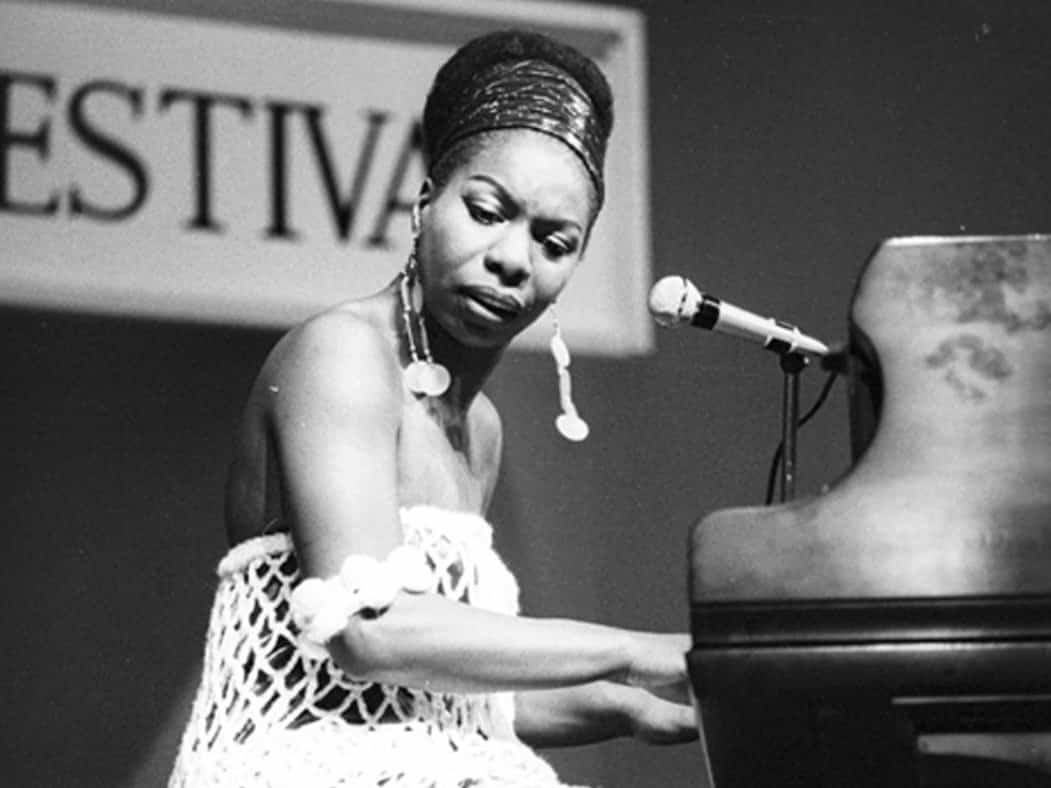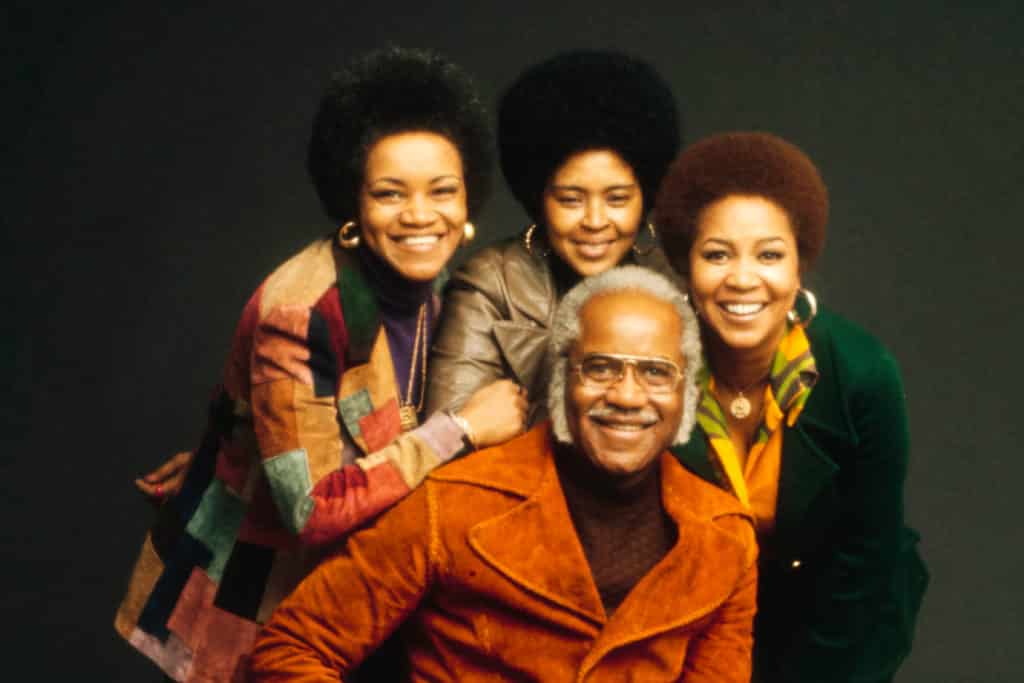Setting and context:
The Summer of Soul festival took place in Harlem, New York with over 300,000 people in attendance. Harlem in the 1960s was the black mecca. People from different cultures and backgrounds came together and were united in Harlem. There were many riots held by the black community to protest for better schools, jobs, and housing. Many riots were violent but many were also peaceful under the leadership of Martin Luther King Jr. who was very respected in Harlem. The Black Panther Party was also very prominent in fighting for equal rights during this time period. The Black Panther Party was security for the festival and was later joined by NYPD once the numbers of the festival grew. Malcolm X also had ties to Harlem through the Nation of Islam in which he led Temple Number 7 for nearly 10 years. Harlem in the 1960s was marked with riots and fighting for the better but also community and unification of blacks from all over the country. Unfortunately in the early to mid-1960s the black community was experiencing drastic loss. The death of John F. Kennedy in 1963, Malcolm X in 1965, Martin Luther King Jr. in 1968, and Robert Kennedy in 1969 sent waves of discouragement and sorrow through the black community.
There was also an influx of drugs in the black community. Many African Americans turned to drugs as a way to escape from the harsh reality of being black in America. In the 80s, the crack epidemic hit an all-time high in black communities, increasing the risk and transmission of HIV and AIDS as well as other diseases. Despite this, Harlem was still a very prominent community through the 1960s-1980s.
Performers:
The festival was hosted by a charismatic and charming man named Tony Lawrence. Lawrence had a way with his words and was able to pull the whole festival together with his exceptional ideas and ability to talk to people. Lawrence was successful in getting Mayor John Lindsey to support the festival and even had Mayor Lindsey speak at the festival. Lindsey had support from the black community and it was obvious that black people supported Mayor Lindsey. During the film, it was said that Lindsey always seemed comfortable around black people.
The festival itself was enormous and had many famous and notable artists including B.B. King who played the blues and Herbie Mann. The 5th dimension with Marilyn McCoo also performed more pop and funk style music with gospel ad-libs. The Edwin Hawkins singers performed “Oh Happy Day” while Pops Staple and the Staple Singers put their own twist on Gospel. They did this by incorporating a funk and blues twist to their gospel songs along with the use of the guitar. Mahalia Jackson performed along with Ben Branch who played the saxophone, and David Ruffin who sang “My Girl.” Glayds Knight and the Pips also performed with the help of Charlie Akins who taught them everything they knew. He was like a father to Glayds Knight and the Pips and made sure they knew etiquette and had class. Nina Simone, also known as the first lady of soul, performed at Summer of Soul as she sang and played the piano. Young Stevie Wonder, who was 19 at the time, performed an outstanding drum solo.
Although the number of white people at the festival was small, Sly and Family Stone brought a white drummer and saxophone player to the Summer of Soul Festival as they played “Everyday People.” The festival also introduced the early use of electronics in music as many artists used electric instruments. There was also a cultural aspect of the festival as Hugh Masekela performed.

Overall, I felt very emotional listening to these artists perform. It was an unbelievable shame that the films of this outstanding festival were left and forgotten about for over 50 years. I could feel and hear the power behind each and every artist who performed and I saw the comfort on the audience member’s faces. Everyone present at the festival shared one thing in common, they were black and dealing with being black in America. I really liked Sly and Family Stone and it was interesting watching white artists perform at such a culturally black festival.
Cultural Impact:

Reverend Jesse Jackson spoke at the festival about MLK and spoke motivation to the crowds at the Summer of Soul festival. There was a fight that had to be fought and Jesse Jackson made sure to preach that to the blacks present. Because the festival could not originally get the police to be present to secure the festival, the Black Panther Party was security for the festival but eventually, NYPD joined in to help keep the festival safe and secure. The Summer of Soul festival highlighted the diversity of black music. Every artist brought a new sound, style, or own twist to the stage.
In Harlem, there were people from all different places including Africa, Latin America, and the Caribbean. People in Harlem craved knowing what it meant to be African. The Summer of Soul festival in Harlem was like a safe space for blacks to join together and embrace shared experiences through music. Artists connected with the pain and trauma felt by their listeners and expressed what the black community was feeling through song.
Genre Analysis:
Gospel music was a genre that was very prominent at the Summer of Soul festival. During slavery, hymns and sacred songs were sung, usually in a call and response style, for religious or spiritual purposes. Gospel carries ties to work and sorrow songs which were sung by slaves upon their arrival to America. This genre of music could also be found in invisible and regular churches. In invisible churches, songs were usually about freedom and keeping faith. By the 1960s gospel would be used as motivation for the Civil Rights Movement. The contemporary gospel was on the rise by the 1970s with the rise of the radio. Many artists faced criticism from churches and supporters of the original gospel for singing contemporary gospel. Pops Staple and the Staple Singers faced criticism from their churches on their twist on gospel music.

R&B was initially introduced with the Great Migration in which thousands of blacks moved to the North to places like Chicago, NYC, and Detroit from the South to escape Jim Crow laws and other racism. Originally, the electric guitar, piano, and saxophone were all leading instruments in the R&B genre. By the late 1950s, R&B had begun to gain major popularity and included music that reflected electric blues, gospel, and soul. R&B had roots in southern church music as musicians brought their music North from the South. During the 1950s, R&B was often referred to as rock n’ roll and had sounds similar to that of rock n’ roll. But during the 60s, R&B began to move away from Rock n’ Roll and move more towards soul with artists like Etta James and Sam Cooke. By the 1970s, artists began experimenting with different rhythms and lyrical content. Some examples of artists who did this are Isaac Hayes and Reverend Al Green. It is apparent that instrumental experimentation was big during this decade. To summarize, classic R&B was present during the 40s, 50, and 60s and was considered rock n’ roll. Musical inspiration was pulled from the blues and church music during this time. Black artists inspired many white rock n’ roll bands including The Beatles and Rolling Stones. R&B during the decades previously listed included the electric guitar backed by the drums, bass guitar, piano, and a lead vocalist. Contemporary R&B began in the 1970s and is still present today. Contemporary R&B increased its use of keyboards and pianos as well as technology like software loops and drum machines. During the 70s, 80s, and 90s, artists like Whitney Houston and Mariah Carey showcased their smooth vocals and their ability to sing varying notes at various pitches. Today, R&B incorporates hip hop, and Bryson Tiller’s album Trapsoul demonstrates the fusion of hip hop into R&B.

